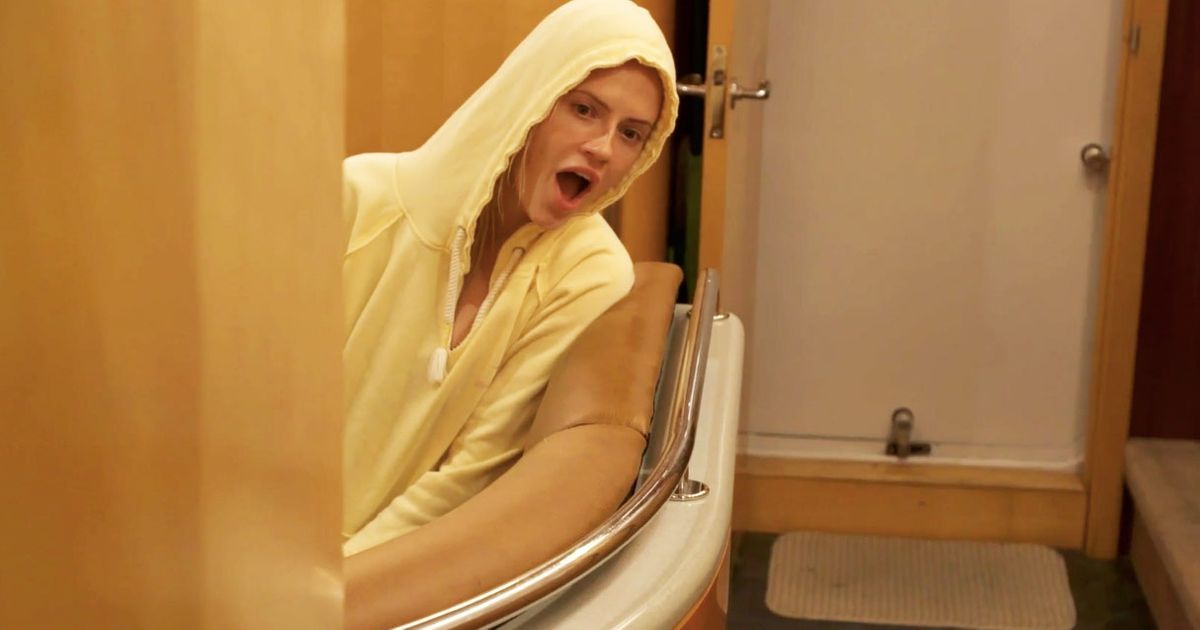It’s finally here. After multiple cancelled attempts over the years, Metroid Dread is finally here. Nintendo’s collaboration with Spanish developer Mercury Steam pays off beautifully for Switch – this is the first entirely new side-scrolling series entry since 2002’s Metroid Fusion and this is a true return to form for the franchise, breathing new life into the ageing Switch hardware thanks to a pristine presentation. Not only that, but the style of its aesthetic also makes it a brilliant showcase for the new Switch OLED model too.
By this point, the history of side-scrolling Metroid games has been told time and time again – but what makes this entry interesting is the way in which it was developed. Like Metroid Prime, Dread represents a fusion of eastern and western influences to create something that feels supremely polished: Nintendo brings its incredible production values to the party, while Mercury Steam’s signature technical excellence shines through. Together, it’s a brilliant match and a much better result than the prior collaboration between the two parties – the patchy Metroid: Samus Returns for Nintendo 3DS.
What I love about Dread is how finely tuned the technical presentation is – all too often, Switch releases run into the limitations of the hardware: frame-rate troubles, long loading times or poor image quality can detract from the experience. That’s not the case here, Metroid Dread is fluid and fast. That starts right when you first fire up the game – boot-up is quick, taking you straight to the main menu with none of the usual corporate logos or lengthy loading times. Jumping into the game is also relatively brief and it’s virtually seamless once in, though elevators and tram-rides are deployed to mask background streaming.
Metroid Dread – the video version of the Digital Foundry tech review.
Metroid Dread embodies what I love about classic console gaming. The technology serves the presentation and you’re never left feeling as if it gets in the way of your enjoyment. Once into gameplay, the first thing you’ll notice is how much sharper it looks than the typical Switch release. In docked mode, the game delivers a resolution of 1600×900 – the game does not use anti-aliasing, but this works to its benefit. Due to its side-scrolling design, you never see far enough into the distance to experience significant shimmering, so it winds up looking sharper. In portable mode, however, things are even better as the game runs at the native 720p of the internal screen. You can imagine that this was done in service of showcasing the new Switch OLED display which, of course, looks incredible with Metroid.
Animation is also first class. The run cycle looks and feels great, thanks in no small part to how traversal sees Samus adapting to the environment. The core movement needs to feel good for any action game to be a success and this is an area where Mercury Steam has struggled in the past. Metroid Dread, however, gets it right. All of this is made possible by an effective animation blending system, allowing multiple animations to work in tandem, with a good degree of contextual versatility. In fact, even the simplest animations impress – just aiming from a standing position showcases remarkable fluidity. No matter what you’re doing in Metroid Dread, animation looks smooth, consistent and natural. Environmental animation can also impress, particularly the physics-driven fluid system.
The suite of atmospheric effects also accentuates the ambience. A subtle use of bloom and light enhances the background while fogging adds depth to the scene. Film grain is strategically used based on your surroundings. I was impressed with the effects work in general, but the quality of the environments builds atmosphere beautifully – the mix of hand-crafted structures with suitable materials and superb lighting certainly makes an impact: specific areas have reflections while others simulate the look of indirect lighting in a surprisingly effective manner. We’ve seen a lot of so-called 2.5D games over the years – and the results aren’t always great – but the development team here absolutely nails it. It’s one of the best-looking side-scrolling 3D games I’ve seen to date and that’s entirely down to that mix of art and technology. That said, there is an interesting caveat to consider: the particle effects look great but particles update at half-rate, likely in service of faster performance. This doesn’t impact everything but you’ll notice these half-rate effects throughout the game.
Performance is also solid overall. During gameplay, Metroid Dread aims to deliver a smooth 60 frames per second experience – something that’s key as all prior console games from Mercury Steam were unsteady or capped at 30fps. The lower frame-rate of the 3DS game prevented it from ever feeling as fluid as it should but thankfully, that is not an issue here. During my experience with the game, Metroid Dread hit its target at nearly all times and it’s remarkably stable to the point where it feels as if the rendering is effortless. This is an impressively optimised engine considering the resolution targets and the hardware it’s running on. That said, in a couple of instances, I noticed occasional slowdown which may well be down to background streaming, but it’s worth noting. Also, cutscenes drop down to 30fps. This entire performance profile is also true of portable mode, which essentially runs like docked mode, albeit at 720p resolution instead.
Another key element worth discussing is the audio. One of the most woefully under-utilised aspects of the Switch is its surround sound capabilities. While lagging behind in terms of competing systems and their sound system support, the hardware has the option to enable 5.1 surround sound, but so many games ship with support for stereo only. With Metroid Dread, Mercury Steam not only showcases surround sound ‘done proper’ on the system, it’s also something of a masterclass in general for sound design and layout, giving us one of the most powerful aural experiences of the year. Whether Metroid Dread places you in the smallest confines with only the sounds of heartbeats or gigantic structures of steel and mayhem, the sound is akin to a living entity throughout, dynamically changing to fit the scenario and truly surrounding you at every angle. While Samus’s actions take centre stage in terms of volumes, standing still highlights the rear channels as rocks tumble, animals scatter and machines operate at a distance. It is truly an awesome experience rarely felt on Nintendo Switch.

The general soundscape of Metroid Dread is also something truly out of this world. Almost every individual aspect and object in the game has a fine-tuned sound design to it, and there is a certain sense of constant unease to how sound is used in the game. The planet of ZDR is a mix of a bio-organic matter as well as awe-striking machinery and a civilisation left behind. Interestingly, the sound mix reflects these aspects by making a lot of the surrounding sounds soft, earthly and recognisable, while at the forefront, metallic, invasive sounds overpower what is in essence, the natural state of ZDR. This is further reflected in Samus’ own journey – while engaging in exploration, the EMMI detecting her create a soundscape of chaos as she is ‘invading’ their territory.
In terms of music, one of Metroid’s defining features in its illustrious legacy and Dread doesn’t disappoint. Each area has a thematically recognisable allure, with striking melodies that perfectly suit the flora and fauna that it represents. There is also a welcome return of the use of a choir, an excellent choice as it comes to represent the voices of the civilisations left in the past on ZDR, a sense of ‘whisper’ from the past that becomes almost haunting as you explore more of the planet and its history.
Between the visual design, the soundscape and the solid performance, the foundations of Metroid Dread are superb and for me, this is one of the standout releases of the year. It’s great to see Mercury Steam finally delivering a game that lives up to the team’s potential – without a shadow of a doubt, this is the best game the studio has ever worked on, breathing new life into a series that has been absent from Nintendo’s home consoles for far too long.
Note: This article have been indexed to our site. We do not claim legitimacy, ownership or copyright of any of the content above. To see the article at original source Click Here













